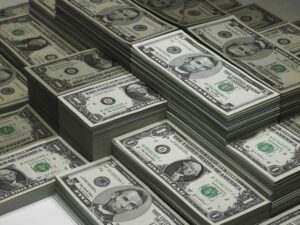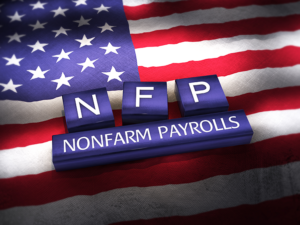U.S. Dollar Steady Near Two-Month Highs Amid Rate Cut Expectations and Political Climate
The U.S. dollar remains strong, hovering near two-month peaks against major currencies on Wednesday. This resilience is largely driven by expectations that the Federal Reserve will implement modest interest rate cuts, alongside rising betting odds for a second Donald Trump presidency.
The euro experienced a slight decline, with analysts widely anticipating an interest rate cut from the European Central Bank (ECB) on Thursday. Meanwhile, the Japanese yen faced pressure due to cautious remarks from a Bank of Japan official.
Both the Australian and New Zealand dollars fell, reflecting growing skepticism regarding potential stimulus measures from China, the leading trading partner for these currencies.
As of 0552 GMT, the U.S. dollar index, which measures the currency against the euro, yen, and four other major competitors, was steady at 103.24. This value is close to Monday’s high of 103.61, the highest level seen since August 8.
Recent economic data, indicating a resilient U.S. economy and slightly higher-than-expected inflation in September, have led traders to scale back predictions for aggressive U.S. interest rate cuts. Currently, there is a 92% probability of a 25-basis-point cut at the Fed’s next policy meeting on November 7, with only an 8% chance of no change. A month ago, traders were anticipating over a 29% likelihood of a more significant 50-basis-point reduction.
Market expectations still strongly suggest a total of 50 basis points of easing for the year. However, comments from central bankers have recently leaned hawkish. Raphael Bostic of the Atlanta Fed indicated he anticipates just one 25-basis-point cut for this year, while Mary Daly of the San Francisco Fed mentioned that “one or two” cuts in 2024 would be “reasonable.”
In recent days, Donald Trump’s odds of winning the election have increased on betting platforms, although the race remains tight. According to Oddschecker.com, Trump has about a 56% chance of victory, while Kamala Harris stands at approximately 44%. Contracts for a Trump win on the PredictIt platform are trading at 54 cents for a $1 payout, with Harris contracts at 50 cents.
James Kniveton, senior corporate forex dealer at Convera.com, stated, “Trump is starting to draw ahead in some betting markets, raising concerns that his tariff proposals could be inflationary, prompting the Fed to reconsider their policy path.” He cautioned that these betting odds have frequently fluctuated in recent months.
The dollar gained 0.1% against the yen, reaching 149.345, close to Monday’s high of 149.98, the strongest since August 1. Seiji Adachi, a member of the BOJ board, commented that the central bank must proceed with rate increases at a “very moderate” pace to avoid premature hikes amid uncertainties in the global economic outlook and domestic wage trends.
The euro dipped 0.05% to $1.0887, matching Tuesday’s low of $1.0882, the weakest level since August 8. The British pound remained steady at $1.3073.
Australian and New Zealand Dollar Performance
The Australian dollar fell by as much as 0.51% to $0.6669, its lowest since September 12, before recovering slightly to $0.6699. The New Zealand dollar also dropped, sinking 0.69% to $0.6041, the lowest point since August 19, and last traded 0.3% lower at $0.60645.
Chinese stocks sharply declined on Tuesday and continued to struggle in the latest trading session, following a rally fueled by expectations of government stimulus that has yet to materialize. China’s finance ministry recently announced plans to increase borrowing but did not specify details. A press conference is scheduled for Thursday to discuss measures aimed at promoting the “steady and healthy” development of the property sector.
Ray Attrill, head of FX strategy at National Australia Bank, noted, “There’s definitely been some building skepticism about China’s real commitment to the kind of fiscal support that would be truly effective,” which has contributed to the downturn in both the Australian and New Zealand currencies this week.
New Zealand’s currency faced additional pressure due to cooling inflation data, which opens the door for more aggressive easing from the Reserve Bank of New Zealand (RBNZ). Statistics New Zealand reported that annual inflation fell to 2.2% in the third quarter, marking the first time it has returned to the RBNZ’s target range of 1% to 3% since March 2021.
“There’s speculation that the next RBNZ rate cut might be as significant as 75 basis points,” Attrill added. “Today’s CPI figures align with that perspective, potentially paving the way for a more substantial cut.”




















